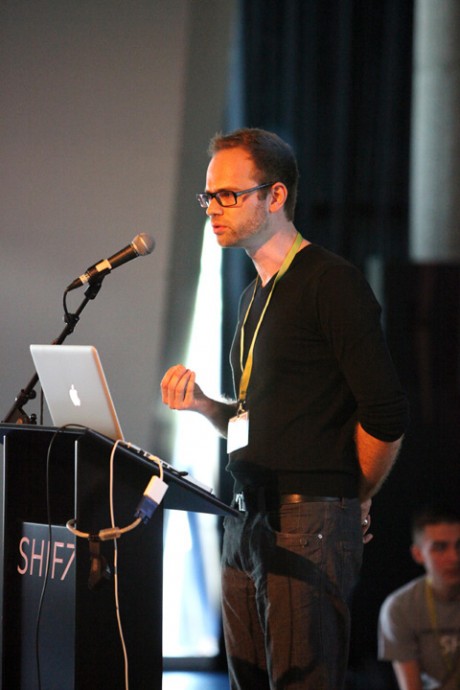• The axial system where both languages share the same spine since arabic is read from right to left and latin the other way round: why not share the same spine?
• A mirroring system; very effective on spreads, where both pages reflect the same message, but in their own direction and own language.
• The interlacing system, simple and kind of musical, one piece with arabic letters, followed by a next piece with latin letters.
• The bilateral system arranges groups of content by size since arabic paragraphs look smaller the type is set bigger.
• The random system breaks the grid: lucky designers can make the best of their creativity here.
• Last but not least, the complementary system: maybe the most bilingual of all, since a title may be set in arab and the rest in latin for esthetic reasons.
Pascal Glissman followed, comparing two very different bilingual urban landscapes, Beirut and Hong Kong. Through a series of photos, Pascal pointed out the contrast between both cities. Hong Kong had many street signs of restrictions and obligations for chinese and anglophones, the decor seemed to supply the people, pipes on walls, plugs everywhere. In Beirut on the other hand, the landscape seemed more chaotic: dilapidated walls with graffiti, serving as stages for the people’s voice. Posters ripped apart, glued on top of each other; political messages, responded to by other expressive inhabitants. Yet somehow, chaotic Beirut seemed full of life, whereas Hong Kong appeared spotless and cold. These urban spaces inspired Pascal Glissman and his students to develop typefaces, for example a chinese typeface inspired by a scaffold and an arabic typeface inspired by chaotic walls. Want to see more? www.fridayfonts.com

Randa Abdel Baki

Pascal Glissmann
Media Designer (New York)
– Louis






















